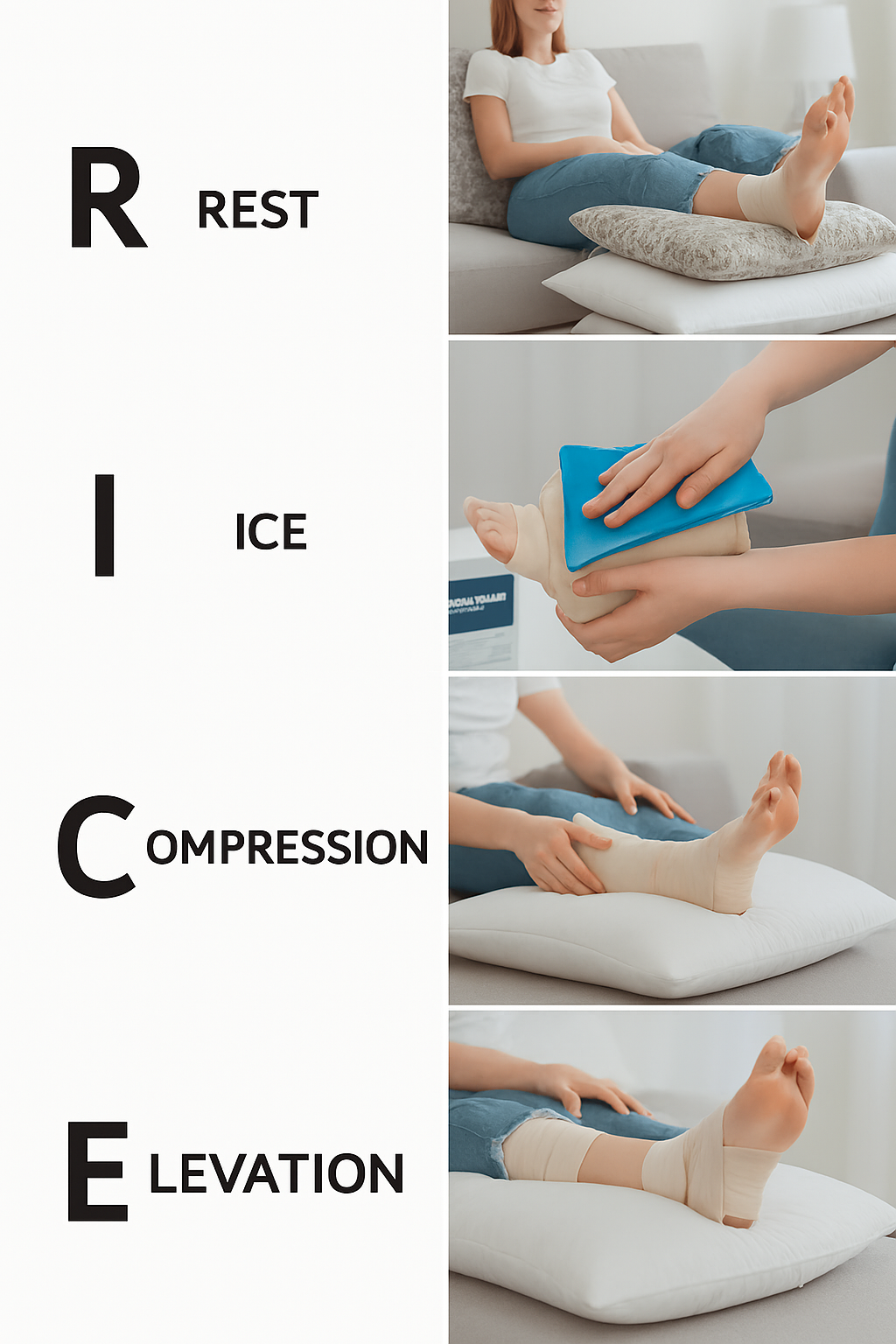- Ankle Sprain – The pain and swelling
- How can you treat your sprained ankle?
- When must you see a doctor?
- How can you strengthen your ankle after spraining?
- When can you start running again after ankle sprain?
- Awareness of overcompensation from the healthy ankle:
- Ankle Sprain – Final Words:
Ankle sprain is one of the most common musculoskeletal injuries in adults, with an estimated incidence of 429 per 100,000 persons per year. For older runners, the stakes are higher because recovery often takes longer, and the risk of compensation injuries increases. Most ankle sprains result from a sudden inward twist of the joint, overstretching or tearing the ligaments that stabilize the ankle bones. But recovery isn’t just about healing the injured side. Protecting the uninjured ankle from overcompensation is essential for long-term mobility and injury prevention.
Ankle Sprain – The pain and swelling
You will feel excruciating pain for a few minutes after you sprain your ankle. The sharp pain will dull down after a few minutes, but it will start swelling up around the damaged side(s). You will feel the pain for a few days, especially while walking. You should be able to walk after a few days, but complete rehabilitation of strength and agility may take months.
How can you treat your sprained ankle?
The initial objective is to alleviate the pain and reduce swelling. Things that help at this stage are rest, ice packs, elevation, restraining compression, and massaging. If the pain and swelling are severe, your ankle requires proper rest. You could apply the ice pack thrice daily for 15-20 minutes. Compression wraps or socks will help in bringing down the swelling. While sitting, you can elevate your ankle to your hip level. It helps to reduce swelling. Avoid activities that may increase swelling, particularly in the first 2 days.

When must you see a doctor?
Ankle sprain is one of the common running injuries After 40, but you must consult a doctor if the symptoms persist or worsen and become unbearable. Signs of a severe sprain may be numbness, swelling for many days, or weight-bearing issues. You will need a diagnosis and evaluation from your orthopedic or podiatric specialist. The treatment may involve an examination of the ankle and foot with manipulations to assess the sprain type and extent of damage.
While this examination may be delayed briefly till the swelling and pain reduce, you can go with the RICE regimen (Rest, Ice, Compression, Elevation) in the interim. X-rays are not standard for ankle injuries because it is a ligament-focused pain. Instead, clinicians use the Ottawa Ankle Rules to identify potential fractures based on pain, tenderness, and weight-bearing limitations. These rules have proven to be highly effective for identifying ankle fractures in over 95% of cases in various studies. It helps to determine if the treatment requires radiographs or x-rays.
How can you strengthen your ankle after spraining?
Full recovery from an ankle sprain means restoring the normal range of motion, which can happen only with the strengthening of ligaments and supporting muscles. You could return to normal activities after a few days, but you will experience pain and discomfort when your ankle is stretched at some angles.
The Three-phase approach
- The initial RICE regimen for pain and swelling reduction
- Followed by rehabilitating the range of motion with ankle-strengthening exercises and stretches
- As you progress on recovery, you must work on your ankle alignment, balance, and endurance.

You can start working on your range of motion by being seated and then progress to standing as the sprain improves. If the pain persists after two to four weeks, consult a physical therapist for personalized intervention. You can also use splints, braces, taping, or elastic bandages to support your ankle during the recovery.
When can you start running again after ankle sprain?
You should be able to walk in about 3-4 days, but your ankle cannot take the running load. One of the best ways to know if you are ready is by trying to walk on your heels with elevated toes. If you can take about 10 steps, it is a good indication that you could get started with a slow run. You will still feel pain while running on uneven surfaces, going up the slope, or taking turns, but you must be in total control of the strides despite the pain.
Runners can tell if the recovery is working in line with their ankle alignment. You may not feel pain while walking, but you will feel tenderness while working on your ankle alignment. You may even see a slight swelling a few days after running. There will be pain, but you must focus on running with a perfect form (as much as possible). It may take 2-3 months to run pain-free again on all types of terrains.
Awareness of overcompensation from the healthy ankle:
We are used to living with 2 legs all our lives, so when one of the ankles is injured, we naturally try to favor the healthy one while walking, getting up, or running. Here, you need to be aware of how much you are compensating with your healthy ankle. You could even end up hurting your healthy ankle if you put more load than what it can handle.
You could also get corns and callouses under the healthy feet because of the new unnatural weight transfer. Worse still, you might even sprain your good ankle. Therefore, you must focus on gradually increasing the load of your sprained ankle and reducing the overworking of your healthy ankle. With a proper running form, combined with strength and mobility exercises, your sprained ankle will eventually take complete control of its job, which is allowing you to enjoy a pain-free run.
If the sprain is too painful, use ankle support socks or a crutch to avoid overcompensation from your healthy ankle. Still, complete rehabilitation will happen only after you heal and stabilize your injured ankle. It is a long process that requires patience, but you could continue with low-intensity running.
Ankle Sprain – Final Words:
As you can see, an ankle sprain will put you out of action and slow you down for months, not something you would want to experience after age 40. You will feel the pain during rehabilitation, which is probably why many people quit running altogether after such injury setbacks.
Although there is no foolproof way to prevent ankle pain when you lead an active lifestyle, you can minimize it to a great extent by being constantly aware of your steps. Just 1 wrong step can mess up things for people working on their fitness after 40. Don’t let your guard down during your workouts, running sessions, or while playing casual sports. Stay focused!
Ankle sprains can be quite debilitating, but with proper care, recovery is possible. It’s important to follow the RICE method—rest, ice, compression, and elevation—to manage pain and swelling. Strengthening exercises are crucial for preventing future injuries, especially for those over 40. Consulting a specialist is essential if symptoms persist or worsen.